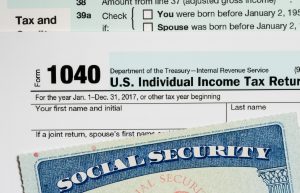If you want to qualify the criteria for SSDI benefits, you must have:
- A serious medical condition that meets the SSA's actual definition of disability.
- Worked in occupations covered by the Social Security Administration.
In general, the SSA pays monthly benefits to individuals who don’t work for a year or more due to a disability.
Typically, there is a 5-month waiting period, and the first benefit is paid in the 6th full month after the date your disability is determined to have begun.
The Social Security Administration may provide disability benefits for up to 12 months before you apply if it is determined that you were disabled during that time and you meet all other eligibility requirements.
Benefits generally continue until you can return to work on a regular basis. There are also special rules, known as work incentives, that offer continued benefits and health care coverage to help you transition back to work. In case you are not aware of these, you can hire a social security disability lawyer, who can guide you throughout the process.
If you are getting SSDI benefits after a full retirement age, your disability benefits automatically get converted to retirement benefits. However, the amount remains the same.
How SSA Decide If You Are The One With Qualifying Disability?
If you have enough work credits to qualify for disability benefits, the SSA follows a thorough process involving 5 questions to determine if you have the disability qualified for the benefits. The 5 questions are:
Step 1: Are you working?
The SSA generally follows earnings guidelines to assess whether your work activity qualifies as Substantial Gainful Activity (SGA).
If you are currently working in 2024 and your earnings carry an average of more than $1,550 per month ($2,590 if you’re blind), you usually be considered to have a disability.
If you are not working or working with a non-performing SGA, SSA will send your note or application to the Disability Determination Services (DDS) office. This office will evaluate your medical condition using the Steps 2-5 below.
Step 2: Are you going through a “SERIOUS” condition?
Your condition needs to be serious enough to significantly limit your ability to do some basic work-related activities. Those include lifting, sitting, walking, standing, or remembering, for about 12 months.
If it does not, the SSA will determine that you do not suffer from any qualifying disability.
If your condition comes in between your basic work-related activities, the SSA moves to the next step.
Step 3: Is your condition found in the list created for disabling conditions?
The SSA thoroughly creates a list of medical conditions for the main body system that are considered severe enough to prevent a person from performing SGA.
If your condition is not on the list, the SSA must check if it is as severe as a listed condition.
If it is, the SSA will determine the qualifying disability. If it is not, the SSA proceeds further.
Step 4: Can you do the same work you were doing earlier?
At this step, the SSA will decide in case your medical conditions prevent you from performing any of your past work. If it doesn’t, the SSA will check that you are not under a disability qualified for the benefits. If it does, the SSA will move forward.
Step 5: Is There a Possibility to Do Any Other job?
If you are unable to do the work you did in the past, the SSA will evaluate whether there is other work you could do instead of your medical impairment(s).
Special Rules for People Who Are Blind or Have Low Vision
The SSA considers you legally blind usually in the cases when it is not possible to improve your vision to better than 20/200 in your better eye, or if your visual field is 20 degrees or less, even with corrective lenses.
Many people who are legally blind may still have some sight and might be able to read large print and get around without a cane or guide dog.
Even if you don't meet the legal definition of blindness, you might still clear the criteria for disability benefits if your vision problems or other health issues prevent you from working.
There are special rules for people who are blind to account for the significant impact blindness has on the ability to work.
For example, the earning amount set up for blind individuals is usually a bit greater than the limit for non-blind workers who suffer from disabilities.
In 2024, the monthly earnings limit for people who are blind is $2,590. However, throughout the process, a disability attorney in Florida can help you deal with the situation.






















